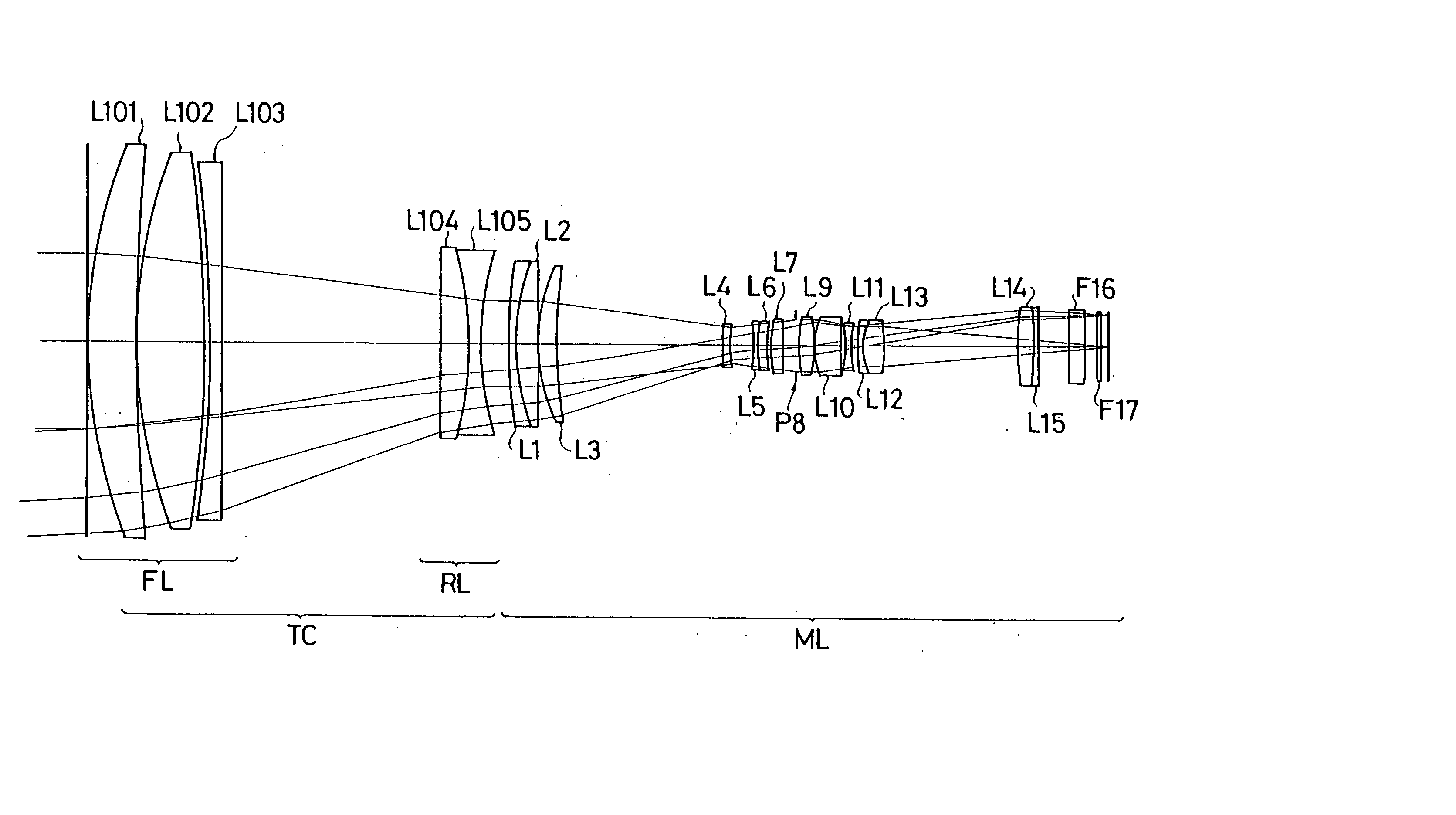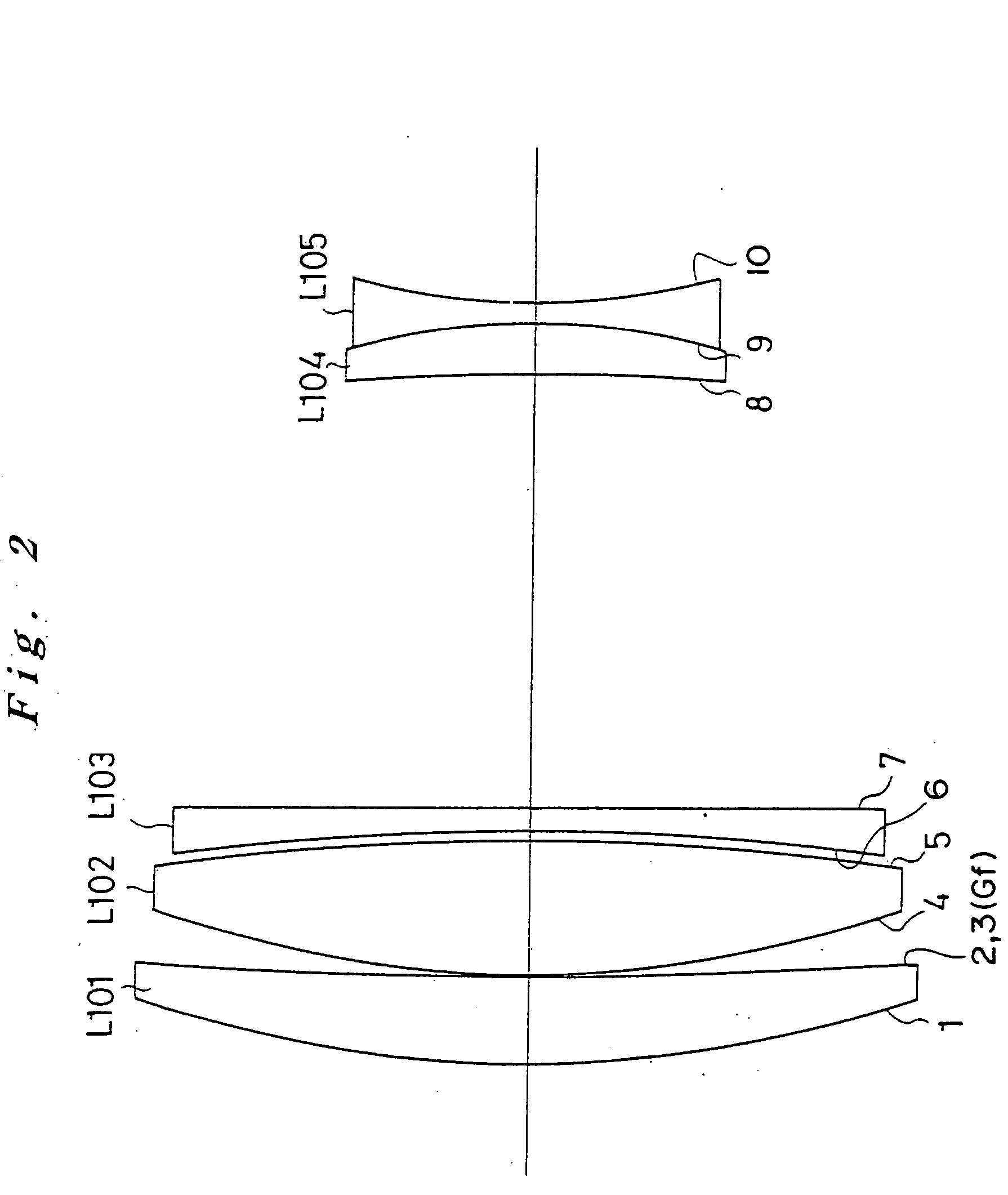Front teleconverter lens system
a technology of teleconverter lens and teleconverter, which is applied in the field of front teleconverter lens system, can solve the problems of insufficient optical performance, and achieve the effect of superb optical performance and sufficiently suppressing aberration production
- Summary
- Abstract
- Description
- Claims
- Application Information
AI Technical Summary
Benefits of technology
Problems solved by technology
Method used
Image
Examples
example 1
FIG. 1 is a diagram showing a combined optical system constructed by a front teleconverter lens system combined with an imaging lens according to Example 1 of the present invention. FIG. 2 is a diagram showing the front teleconverter lens system of the combined optical system. FIG. 3 is a diagram showing the imaging lens of the combined optical system. As shown in FIGS. 1 and 3, the imaging lens ML used in the combined optical system according to Example 1 is composed of, in order from an object, a cemented positive lens constructed by a negative meniscus lens L1 having a convex surface facing to the object cemented with a biconvex positive lens L2, a positive meniscus lens L3 having a convex surface facing to the object, a negative meniscus lens L4 having a convex surface facing to the object, a cemented negative lens constructed by a biconcave negative lens L5 cemented with a positive meniscus lens L6 having a convex surface facing to the object, a positive meniscus lens L7 having...
example 2
FIG. 5 is a diagram showing a combined optical system constructed by a front teleconverter lens system combined with an imaging lens according to Example 2 of the present invention. FIG. 6 is a diagram showing the front teleconverter lens system of the combined optical system. As shown in FIGS. 5 and 6, the front teleconverter lens system TC according to Example 2 is composed of a first lens group FL having positive refractive power and a second lens group RL having negative refractive power. The first lens group FL is composed of a cemented positive lens constructed by, in order from the object, a negative meniscus lens L201 having a convex surface facing to the object cemented with a biconvex positive lens L202 on the object side surface of which a diffractive optical surface is formed. The second lens group RL is composed of a cemented negative lens constructed by, in order from the object, a positive meniscus lens L203 having a concave surface facing to the object cemented with ...
PUM
 Login to View More
Login to View More Abstract
Description
Claims
Application Information
 Login to View More
Login to View More - R&D
- Intellectual Property
- Life Sciences
- Materials
- Tech Scout
- Unparalleled Data Quality
- Higher Quality Content
- 60% Fewer Hallucinations
Browse by: Latest US Patents, China's latest patents, Technical Efficacy Thesaurus, Application Domain, Technology Topic, Popular Technical Reports.
© 2025 PatSnap. All rights reserved.Legal|Privacy policy|Modern Slavery Act Transparency Statement|Sitemap|About US| Contact US: help@patsnap.com



